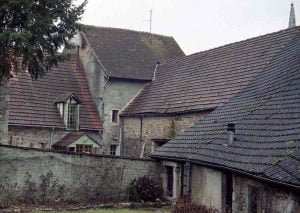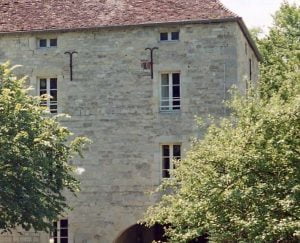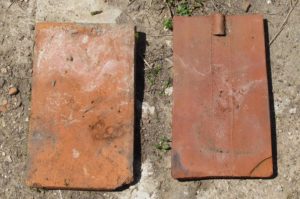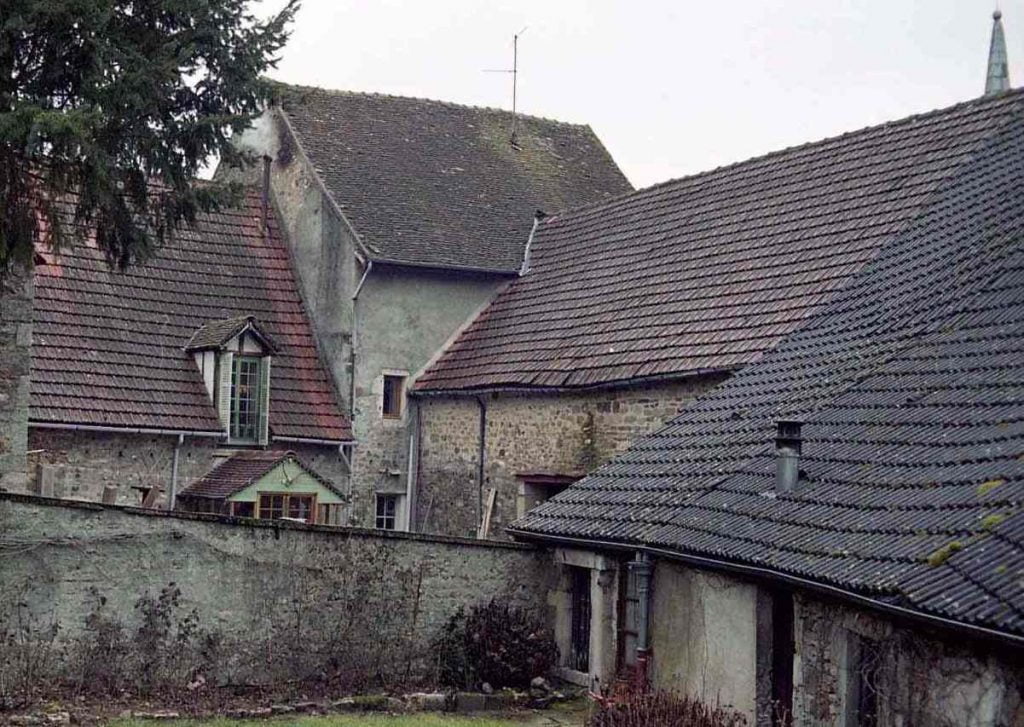Originally posted 2013-06-11 21:48:26.
Damp in your old house and how to deal with it. Part Two in a series explaining where damp in old buildings comes from and what you can do to combat it. Most of the advice is applicable anywhere.
Before worrying about how to get rid of dampness that is already in the house, it makes sense to make sure no more can get it first. There are a number of important areas where unwanted moisture can make it into your house. The roof is the easiest to deal with so we’ll tackle it first.

Geography of damp
France is divided, basically, into the north, where flat tuiles plates were traditional, and the south, where rounded tuiles romaines are found.
There is a line just south of Chalon sur Saone where you can see this change quite clearly, and you know you have officially entered le sud, even though the Mediterranean is still hundreds of miles away. I always stop for a glass of wine in a café when I pass this point. Roofs in the north, with their flat tiles, tend to be steeply pitched, whereas in the south the pitch is much more gentle.
It is often said, by the way, that the characteristic curved shape of the tuile romaine was formed by a man wrapping the clay over his bare thigh. This may or may not be true, but it does describe the shape perfectly. Traditional tuiles plates are also, it should be noted, not flat but curved, though in the other direction. This is important as it means that if you mix them with modern flat tiles, which actually are flat, the result will not only look awful, it will leak.
Other types of roof
There are many other types of traditional roof in France, these are just the most common. Slate, ardoise, is often found, especially in finer work or on small towers or dormers, and stone tiles called lauzes, or laves, are also common. The difference between lauzes and laves is that laves are made of basaltic, volcanic rock, while lauzes are made of limestone or other sedimentary rock; but everyone will know what you mean if you call them laves.
In some parts of France, thatched roofs are still seen, but these are well outside my ken.
As well as the traditional, hand-made tiles, it is common to see tuiles mecaniques, or factory-made, moulded tiles. These are especially common in the north. They are also frequently mixed with tuiles plates.
Pitch
Because of the very steep pitch used for tuiles plates, which is in turn forced by their lengthwise curved shape, they have to be hung on tiling battens. They are either nailed on or more commonly hooked on by a moulded projection called an ergot. Note that you can’t easily drill the holes in these tiles; if there are holes they will be cast in from new. Thus the buyer of reclaimed tiles had better check that the ergots have not been knocked off, a very common result of careless stacking, otherwise a bargain may turn out not to be, as he will break at least half drilling them. Traditionally no sarking timber is placed under these, so the tiles can be accessed directly from below, which can be extremely useful.
Tuiles romaines are also placed on battens but are simply laid and then mortared in place, forming a rigid structure.
Slate roofs in France are not normally nailed but instead the tiles are hung on galvanised metal hooks. These can fail through corrosion but at least the tiles are easy to replace until they do.
Stone roofs are not for the amateur to take lightly
Professional help or considerable research will have to be done before repairs can be tackled safely. Working on roofs is always dangerous, but even more so when using stone because of the enormous weight, and scaffolding will be required for quite basic maintenance work. Furthermore while it is relatively simple for an amateur to nail tiling battens at the appropriate intervals and then hang tiles, stone roofs are much more complicated in their structure, involving the need to accurately size the stone and level each course with intermediary smaller stones called cales which prevent the main stones from actually touching. This promotes the circulation of air and prevents a capillary channel for moisture to creep in and rot the roof-timbers.
It really is essential to get professional help if you have a roof like this, but unfortunately the older generation of French tradesmen who had the skills needed to work on these roofs is dying out and there are very few left. I hope that younger people coming into the industry will realise the value of being one of the few to possess such skills, so that these wonderful roofs can be preserved and maintained; but I am quite sure their services won’t come cheap.
Tuiles plates.

Broken tuiles plates are easily replaced, as the old tile can usually be wiggled out and a new one put in place from inside the roof. If the roof is reasonably small, quite large areas of tile can be repaired using a proper roofer’s ladder, which hooks over the ridge. Note however, that this requires steely nerves at the best of times, and often the roof is so big and steep that it is really not appropriate. For example, the main roof on my home is ten metres from edge to ridge, pitched at 55 degrees from horizontal, and the lowest part is six metres above ground. That’s quite a sensation of altitude.
An important issue with these roofs is the state of the tiling battens, as the failure of these elements requires all the tiles to be removed for their replacement. Tile battens were often made from poplar, which must be like sweeties to woodworm beetles, and is only good for 30 years at most. New pressure-treated pine battens should last much longer. Again, replacing tile battens is a professional job; while the amateur can tackle a small shed or outhouse, the sheer size of most roofs means that professional equipment and skills are a pre-requisite. Unfortunately, as with so many things, the number of French tradesmen prepared or indeed able to work with the old tuiles plates is declining rapidly and many who can, will be very expensive. It will almost always be much cheaper to retile the whole roof with new flat tiles than to carefully remove, stack, and replace the old ones; but the result will look awful.
Tuiles Romaines
Tuiles romaines suffer from the same problem in that if the underlying timber fails, replacement also means taking the roof off. Individual tiles are extremely difficult to replace because the structure of the roof means they are all locked together, but it can be done. However, the much less severe pitch on a roof like this is such that it is safe for someone supported by roofing boards to work on, so scaffold is not always required. While I would hesitate to suggest that this would allow the amateur to carry out major works, at least routine maintenance and minor repairs are possible, as long as you have researched the issue thoroughly and are sure you know what you’re doing.

Tuiles Mecaniques
Tuiles mecaniques are prone to breaking, especially if they have not been well laid. Because the tiles interlock and are also quite large, it is essential that adequate space is left at upstands for the tiles to expand and contract, otherwise they will surely crack. A tile has to deal with blazing summer sun when its surface can become hot enough to literally fry eggs, and midwinter nights with air temperatures of minus twenty Celsius or less; expansion and contraction will happen and must be allowed for. These tiles can be awkward to replace either from inside or outside, but at the price of a few choice curses the job can usually be done without the removal of too much skin.
The tile you want to repair is always just above a rafter, and so you will need to remove several other tiles to get to it if working from inside, but patience and care are the key. The trouble starts if the roof was originally clad with tuiles plates and subsequently recovered with tuiles mecaniques using the same rafters. This is because the rafters for tuiles plates are closer together because of the much greater weight, and it can be impossible to wiggle the larger tuiles mecaniques up through the gaps from the inside. On moderately-sized roofs with this problem, repairs can be carried out using a proper roof ladder, but again, for larger roofs a professional will probably have to help.
Tuiles Mecaniques suffer from the disadvantage that there is only one thickness of tile, so a cracked tile will instantly leak, while, since the older type are laid with an overlap, they tend to be less of a problem. Any unexpected ingress of water under a tuiles mecaniques roof should be checked for this.



